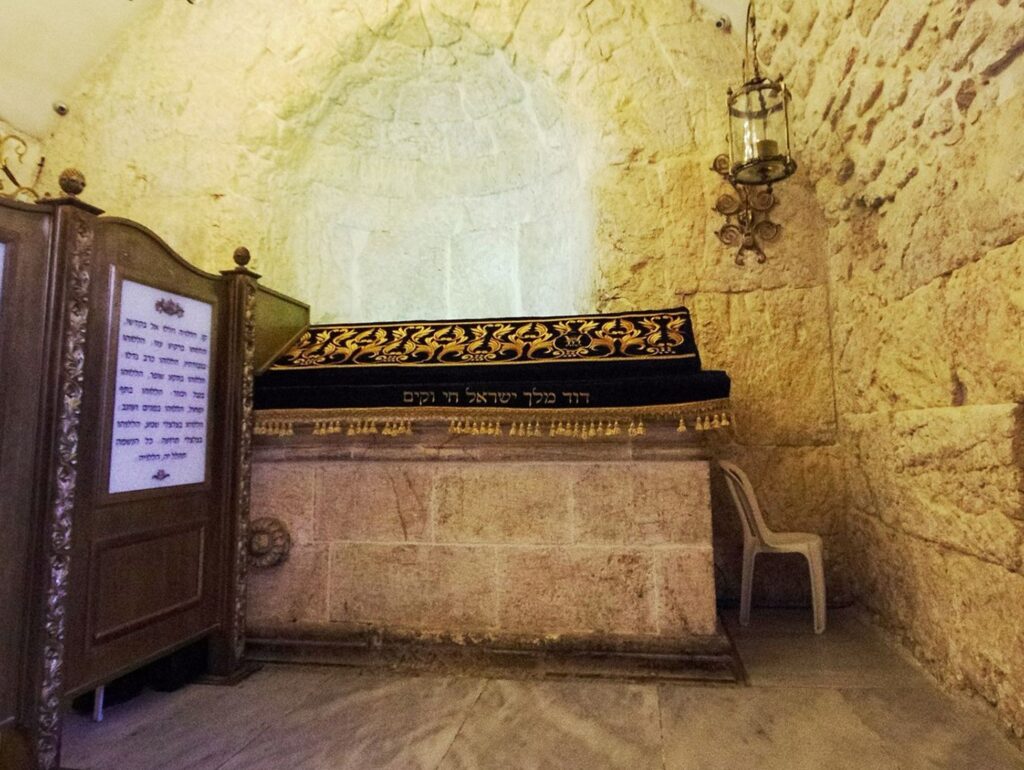Here Lies the King

David's Tomb is the name of a building on Mount Zion where, according to tradition, King David is buried. According to Christian belief, on the second floor of the building is the room of the Last Supper, where Jesus and his disciples had the meal after which he was captured by the Romans and crucified.
The building itself dates back to the Crusader period. In its lower floor, which apparently was the crypt of an earlier Crusader church, stands a large Roman sarcophagus covered with a veil, which is identified with the tomb of King David. The outer extension located next to the tomb room is the cloister, or inner courtyard, of a Franciscan monastery that existed there in the 14th century. The Turks expelled the Christians from the compound in the 16th century after the conquest of Jerusalem, and built a mosque tower on its roof.
בתנ"ך כתוב שדוד וצאצאיו, המלכים לבית דוד, נקברו בעיר דוד ולא בהר ציון. מיקום קברי המלכים לבית דוד היה ידוע בעת העתיקה עד לימי בית שני, אולם אבד מאז. עם חורבן ירושלים, חרבו כנראה גם הקברים ונעלמו.
The tradition that determines the burial place of King David on Mount Zion is later and is about a thousand years old. Various sources indicate the place, the first of which is Al-Maqdisi, a Muslim merchant who traveled throughout the Middle East and the land of Israel in the 10th century and authored an important geography book. Other sources are Benjamin of Tudela, a 12th century Jewish explorer who set out on his journey from Zaragoza in Spain around the year 1165 and visited the land of Israel and Jerusalem, among other places, and Ishtori Haparchi, a rabbi and scholar of the land of Israel who lived there in the early 14th century. Over the years, the Jewish tradition identified the place as the tomb of David, and the entire complex became sacred to Christians and Muslims as well.
Today, the site is mainly used by Jewish believers, and operates as a synagogue with separate entrances for men and women. On Shavuot, the date of King David's death according to tradition, thousands of worshipers visit the place.
(Anecdote authored by: עמיר)
(Number of views: 102)
